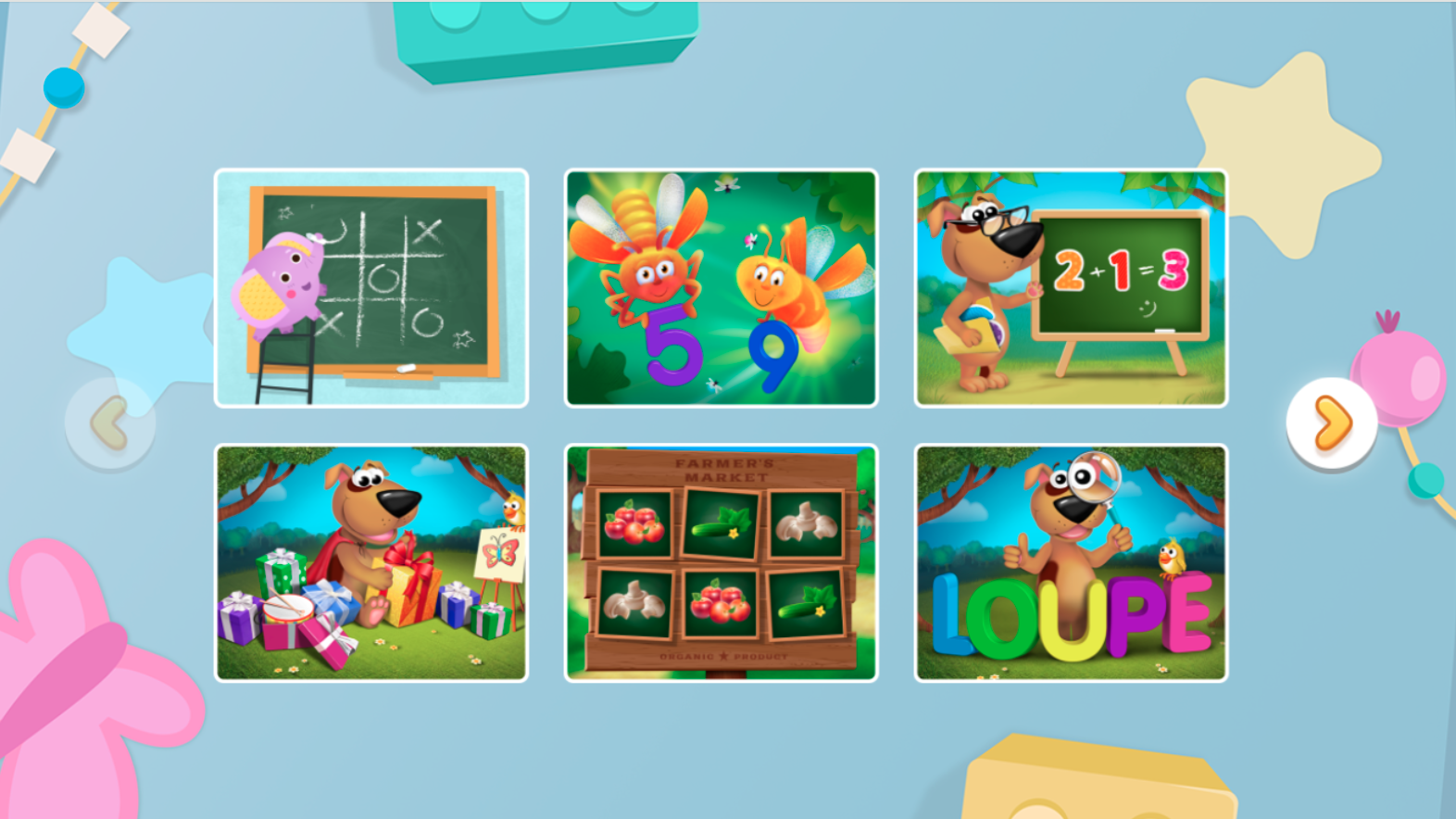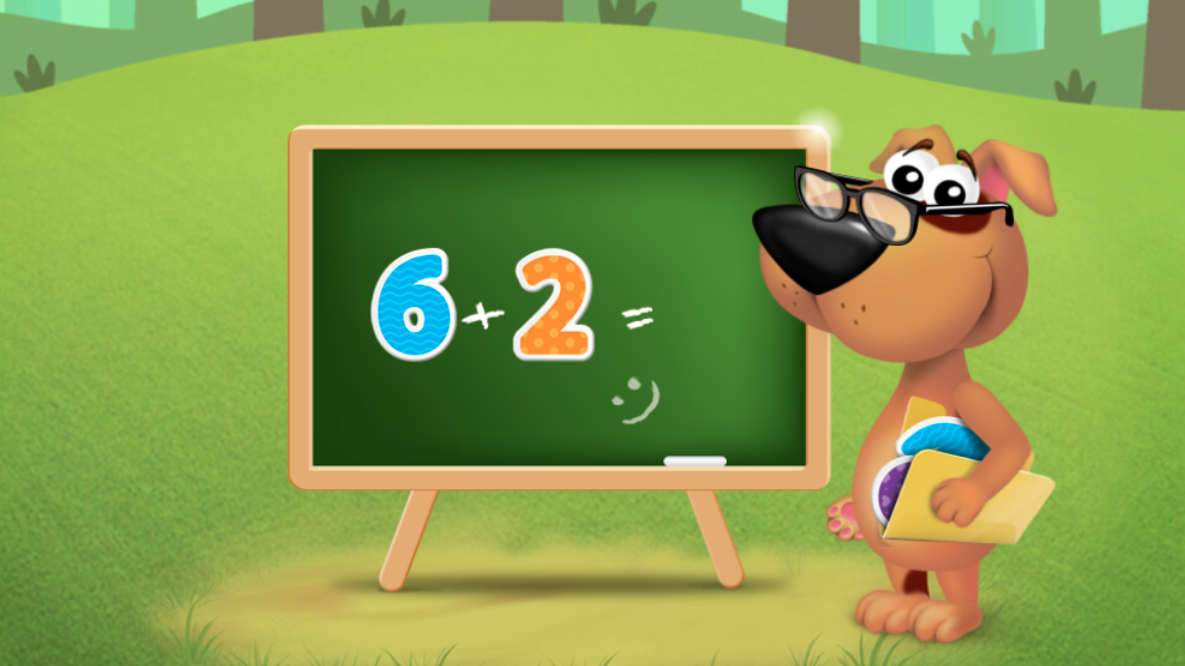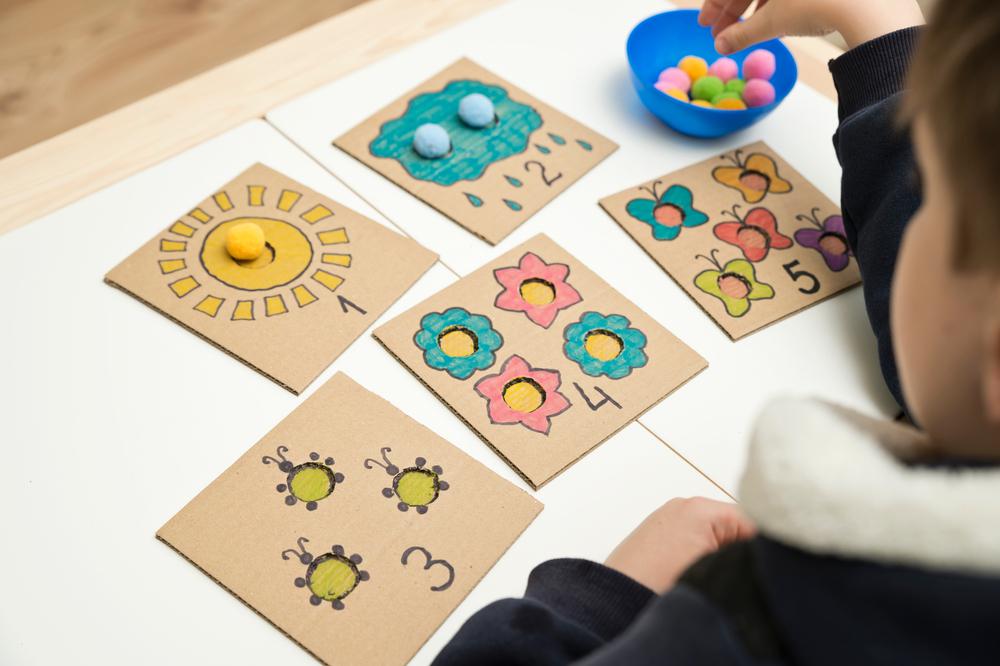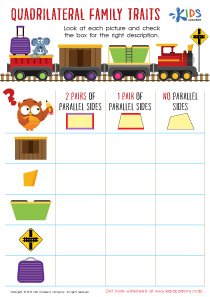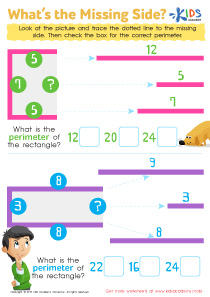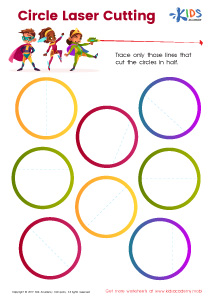Shape Recognition Normal Tracing Shapes Worksheets for Ages 3-9
6 filtered results
-
From - To
Unlock your child's potential with our Shape Recognition Normal Tracing Shapes Worksheets for Ages 3-9! Designed to enhance early learning and fine motor skills, these engaging worksheets help young learners identify and trace various shapes with ease. From circles to rectangles, kids will enjoy a hands-on approach to shape recognition through fun and interactive tracing activities. Perfect for preschool and early elementary students, our worksheets provide a solid foundation in geometry, paving the way for future math success. Inspire confidence and creativity in your child with our expertly crafted tracing shapes worksheets. Download and print today!
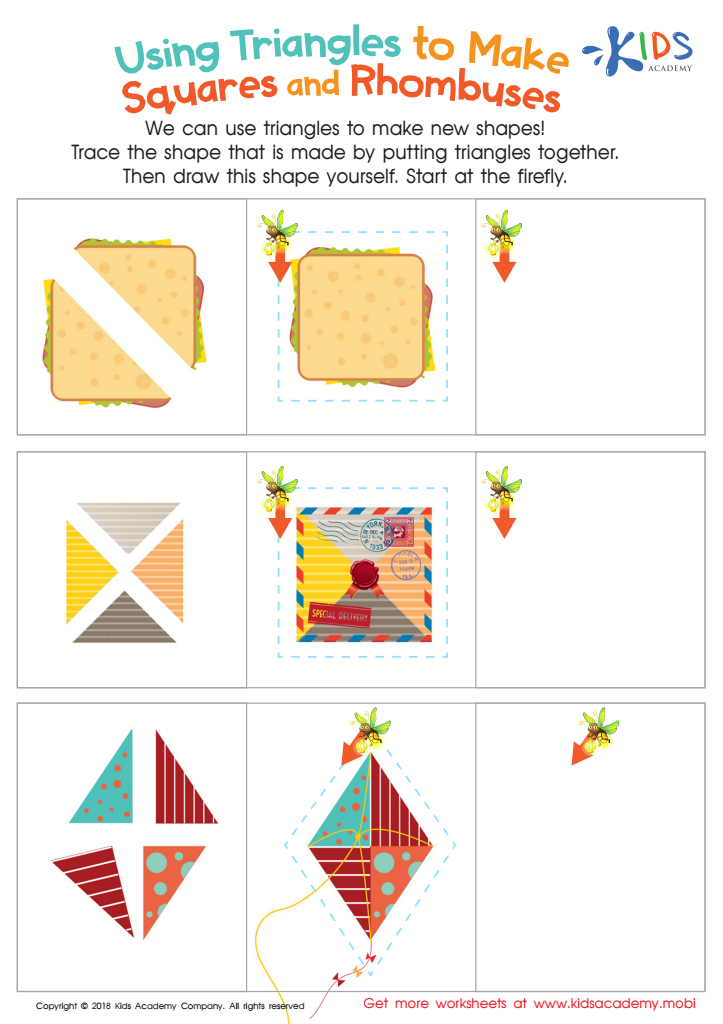

Using Triangles to Make Squares and Rhombuses Worksheet
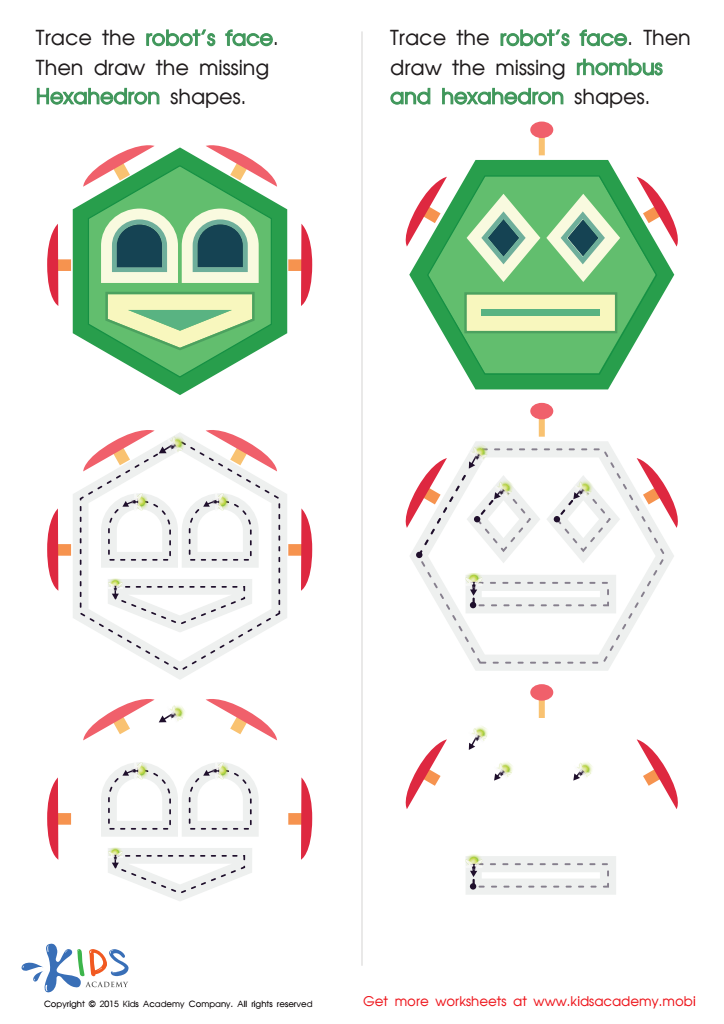

Practice Drawing Hexahedrons And a Rhombus Worksheet
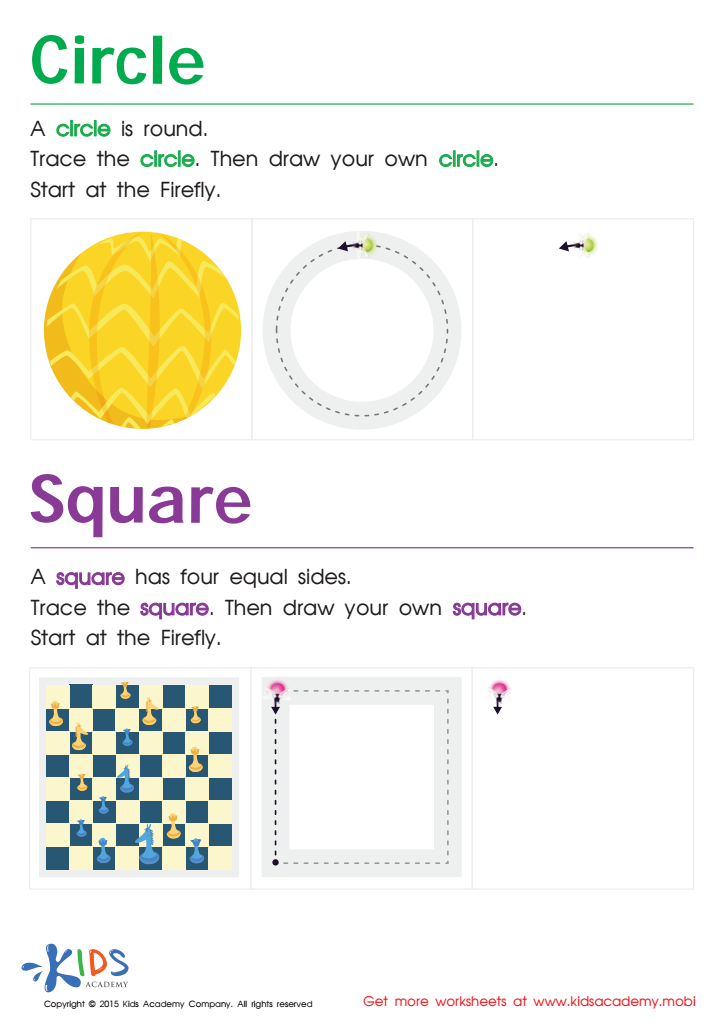

Trace And Draw a Circle And a Square Worksheet
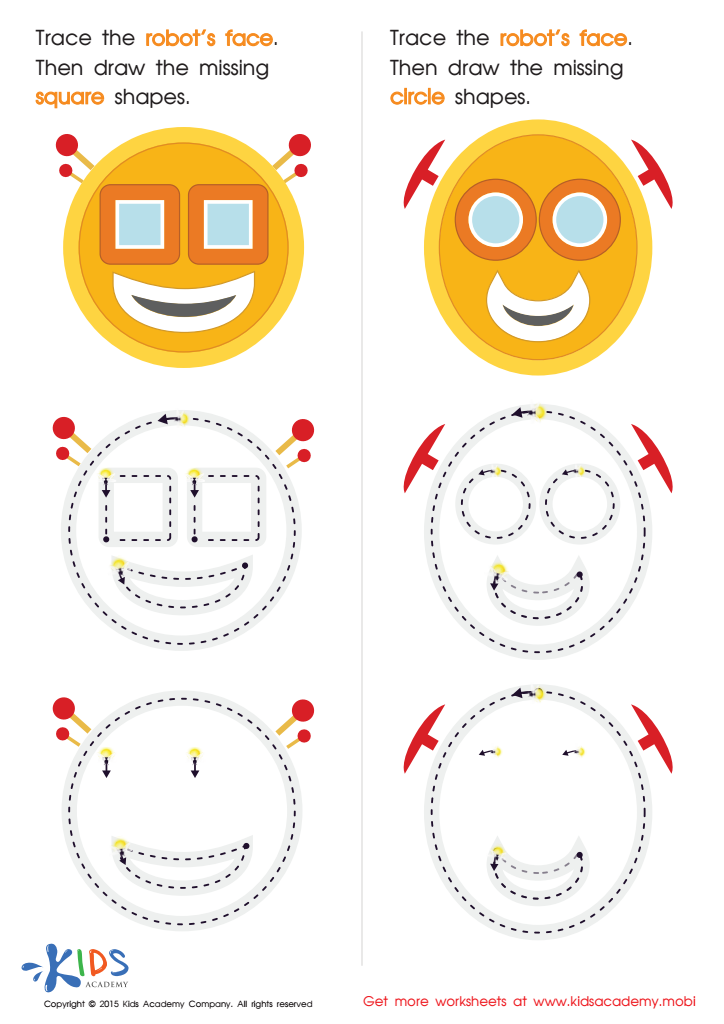

Practicing to Draw Circles And Squares Printable
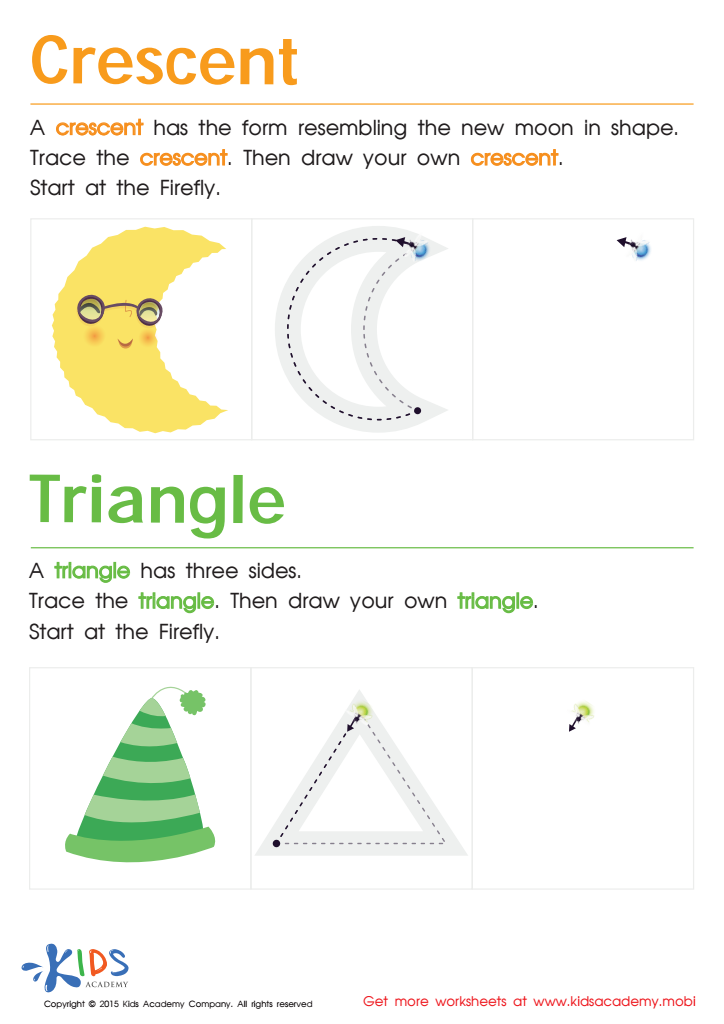

Learning to Draw Crescents And Triangles Worksheet
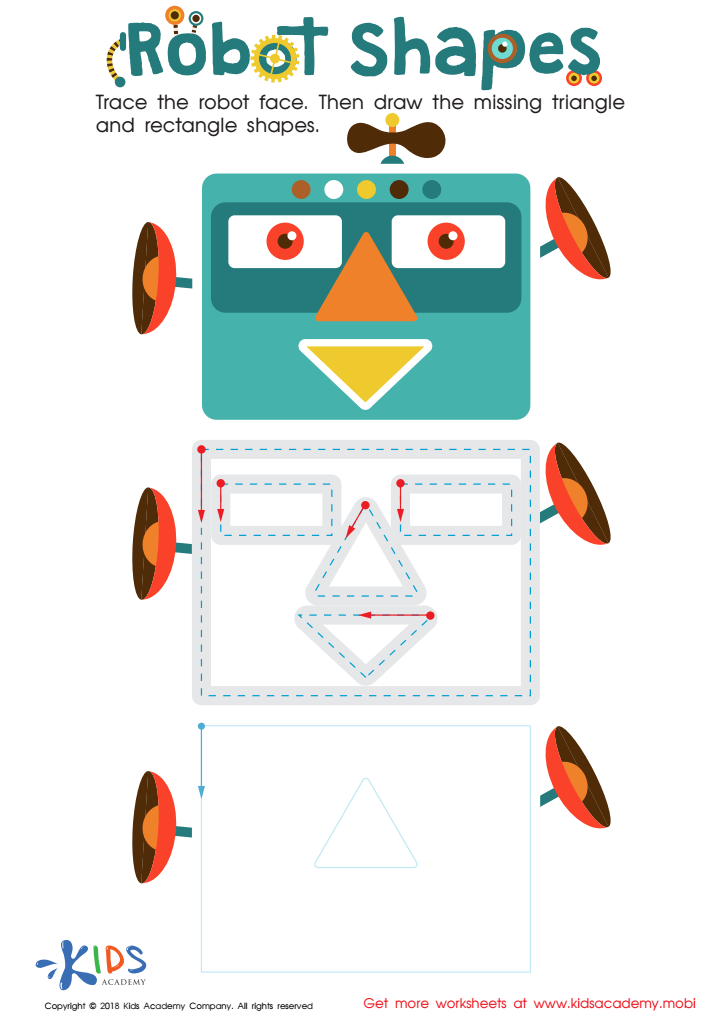

Robot Shapes Worksheet
Shape recognition is a foundational skill for young children, typically ages 3-9, essential for their cognitive and perceptual development. It enables kids to understand and classify the world around them, providing a basis for learning more complex mathematical concepts, such as geometry, spatial awareness, and problem-solving.
Normal tracing shapes activities play a crucial role in this developmental stage. When children trace shapes, they fine-tune their motor skills, enhancing hand-eye coordination and ensuring that their hands are well-prepared for writing tasks. This practice also supports brain-eye connections, making their recognition and differentiation of shapes more intuitive.
Moreover, mastering shape recognition fosters language development. As children learn to identify shapes like squares, circles, and triangles, they build their vocabulary and learn to describe objects more effectively. This descriptive capability is key for both oral and written communication, making it easier to follow directions and convey ideas clearly.
For teachers, integrating shape recognition and tracing into the curriculum ensures that students are on track with developmental milestones. For parents, engaging in these activities at home provides invaluable one-on-one learning experiences. Collectively, these shape-focused exercises create a foundation for future academic success and foster a love for learning, crucial in these early impressionable years.

 Assign to My Students
Assign to My Students


